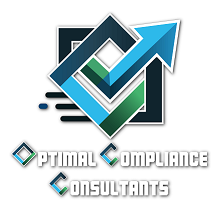New Occupational health and safety act- Occupational health and safety amendment bill 2020
The New Occupational Health and Safety Act of 2020 introduces significant changes to the original Act of 1993. This response will explore these changes in detail, covering definitions, notable section amendments, and the new penalty structure
Definitions – A Shift Towards Proactive Health Management
Several changes to the definitions in Section 1 demonstrate a clear intention to emphasize health alongside safety and promote proactive risk management.
- Danger: This definition now includes “adverse health effects”, highlighting that the Act is concerned with protecting workers’ well-being, not just preventing physical injuries.
- Employer: The definition of “employer” has been expanded to include any person, institution, or organization, including government bodies, who employs and remunerates individuals. This removes the previous exclusion of labor brokers and broadens the Act’s scope, ensuring more workers are protected.
- New Definitions: The amendment introduces several new definitions that underscore the focus on health and proactive safety management:
- Hazardous substance: Defined as any substance that poses a risk to health, requiring employers to identify, assess, and control these substances in the workplace.
- Occupational disease: This definition, derived from the Compensation for Occupational Injuries and Diseases Act, emphasizes the importance of recognizing and preventing work-related illnesses.
- Occupational health standard: This definition highlights the need for specific standards to promote employee health and safety.
- Occupational hygienist: This new definition clarifies the qualifications and expertise required to conduct workplace assessments and evaluations.
- Permanent disablement: Defined as per the Compensation for Occupational Injuries and Diseases Act, this addition ensures consistency in assessing work-related disabilities.
- Risk: The definition of “risk” has been broadened to include “illness or death of the employee or any other person” in addition to property damage, further emphasizing the focus on health and safety of all stakeholders.
- Risk assessment: The Act now defines this crucial process, emphasizing the need for employers to systematically identify and evaluate workplace hazards.
- Risk management: This definition clarifies the process of mitigating risks through appropriate control measures, underscoring the importance of a proactive approach to safety.
- Safety management system: This definition clarifies the need for a comprehensive and coordinated approach to managing health and safety in the workplace.
- Safety standard: This definition broadens the scope beyond SABS standards to include any standard that promotes safety.
- User: This definition now explicitly includes volunteers, ensuring their protection under the Act’s provisions.
Section Amendments – Enhanced Responsibilities and Empowerment
The amendments to various sections reflect a move towards clarifying responsibilities, improving communication, and strengthening enforcement mechanisms.
- Sections 8 and 9: Employers are now explicitly required to conduct workplace-specific risk assessments and develop written risk management plans. This goes beyond generic baseline assessments and requires tailored plans to address the specific hazards of each workplace. The responsibility extends to considering the safety of external stakeholders who may be affected by the employer’s activities.
- Section 11: The process for declaring “listed work” has been amended to mandate consultation with the Council before the Minister makes any declarations. This ensures expert input and a more balanced approach to identifying high-risk work activities.
- Section 12: This section, concerning listed work, now requires employers to develop and implement a workplace-specific risk management plan and prohibits undertaking listed work unless the control measures outlined in the plan are complied with. This strengthens the emphasis on having documented procedures for managing the risks associated with hazardous work.
- Section 13: The wording in this section has been changed from “reasonably practicable” to “is,” making the employer’s duty to inform employees about hazards and precautions absolute. This removes ambiguity and reinforces the importance of clear and comprehensive communication about workplace risks.
- Section 16: The phrase “reasonably practicable” has been removed, making the CEO directly responsible for ensuring the employer’s duties under the Act are fulfilled. This strengthens the accountability of top management for workplace health and safety, placing a clear obligation on them to prioritize these issues. The amendment also mandates that delegation of these duties must be in writing, providing a clear record of responsibilities.
- Section 17: The amendments require written designation of health and safety representatives and introduce the Commission for Conciliation, Mediation, and Arbitration (CCMA) as the body to handle disputes regarding their nomination or election. This adds formality to the process and ensures a fair and independent mechanism for resolving disagreements.
- Section 18: The roles of health and safety representatives have been expanded. They are now authorized to request information from the chief inspector and report non-compliance to both the employer and the health and safety committee. This empowers them to play a more active and influential role in upholding workplace safety standards.
- Section 19: This section now requires the establishment of a health and safety committee even if only one health and safety representative is appointed. This emphasizes the importance of having a dedicated forum for discussing and addressing health and safety concerns, regardless of the workplace size. Additionally, meetings must now be held at least once every two months (changed from every three months), promoting more frequent communication and collaboration.
- Section 20: The responsibilities of the health and safety committee have been significantly expanded to include identifying relevant regulations, ensuring training and monitoring provisions are in place, making recommendations for the safety management system, and reviewing training materials related to hazardous substances. This places a greater onus on the committee to actively contribute to improving workplace safety practices.
- Section 24: Employers and self-employed individuals are now required to submit annual incident statistics to the Department of Labour. This new requirement provides valuable data for identifying trends and developing targeted interventions to address recurring issues and improve safety performance across industries.
- Section 25: The reference to the Workmen’s Compensation Act has been updated to the Compensation for Occupational Injuries and Diseases Act 1993, reflecting current legislation.
- Section 26: The amendment strengthens the focus on preventing victimization by explicitly stating that employers cannot retaliate against employees for exercising their rights under the Act, including reporting safety concerns.
- Sections 28, 29, 30, 31, and 32: These sections grant inspectors greater authority to conduct investigations, issue prohibitions, and gather evidence. Key changes include:
- Inspectors can now issue administrative fines, offering an alternative enforcement mechanism to court proceedings.
- Copies of inspection reports must be provided to health and safety representatives and union representatives, enhancing transparency and worker involvement.
- Inspectors are explicitly empowered to enlist the assistance of the South African Police Service when necessary, strengthening their ability to conduct effective investigations.
- The process for formal inquiries has been streamlined, with the chief inspector appointing a presiding inspector and evidence being submitted directly to the National Prosecuting Authority. This removes the previous involvement of the attorney-general and expedites the process.
- Section 35: The appeal process against inspector decisions has been revised, with appeals now going directly to the chief inspector. This simplifies the process and focuses the review on the expertise of the chief inspector.
- Section 36: This section, concerning information disclosure, has been amended to incorporate provisions from the Protection of Personal Information Act (POPI), balancing transparency with the protection of sensitive employee information.
- Section 37: The amendment introduces new Sections 37A-37F, holding all individuals in the management chain accountable for contraventions or failures to comply with the Act that result in death, permanent disablement, or illness. This broadens the scope of responsibility and emphasizes that safety is a shared accountability at all levels of the organization.
- Section 38: This section outlines the new penalties for contraventions of the Act (discussed in detail below).
- Section 39: The amendments include minor changes to language and syntax for clarity.
- Section 40: The process for applying for exemptions has been streamlined, with a 30-day timeframe for finalizing applications.
- Section 41: The wording of this section has been slightly altered for clarity.
- Section 43: This section, detailing the Minister’s power to make regulations, now includes provisions for:
- Classification and labeling of hazardous chemical substances, promoting consistent practices and enhancing hazard communication.
- Collective agreements between employers, employees, and trade unions on health and safety matters, encouraging a collaborative approach to developing and implementing safety protocols.
- Section 44: The process for incorporating health and safety standards into regulations has been revised. The focus is now on incorporating South African National Standards, aligning workplace practices with recognized national standards.
- Section 44A: This new section introduces the concept of an “approved inspection authority”, empowering the chief inspector to approve organizations accredited by SANAS to conduct specialized inspections and investigations. This provides access to expert resources and strengthens the oversight of workplace safety practices.
- Section 45: The amendment simplifies the wording regarding the serving of notices.
- Section 46: The jurisdiction of courts handling OHS Act matters has been clarified. The Labour Court now has exclusive jurisdiction to determine disputes about the Act’s interpretation and application, while the High Court may be involved in reviewing decisions of the chief inspector.
- Section 46A: This new section empowers the Director-General to refer questions of law to the High Court or the Supreme Court of Appeal. This provides a mechanism for resolving complex legal issues and ensuring consistent application of the Act.
New Occupational health and safety act- Increased Penalties – A Deterrent to Non-Compliance:
The most striking changes are in the penalty structure, reflecting a determination to deter non-compliance and hold offenders accountable for jeopardizing worker health and safety.
- Section 38: This section replaces the original penalty provisions with a tiered system:
- Schedule 1 Offenses: For specific offenses outlined in Schedule 1, varying maximum fines and imprisonment terms apply.
- Other Offenses: For offenses not explicitly defined, the penalty is a fine of R100,000 or imprisonment for a period not exceeding one year, or both.
- Regulation Contraventions: For contravening regulations under Section 43, the maximum penalty is a staggering R5,000,000 or imprisonment for a period not exceeding five years, or both. This represents a significant increase from the previous maximum fine of R50,000 and imprisonment term of one year.
- Admission of Guilt Fines: The amendment grants the Minister the authority to specify prescribed admission of guilt fines for certain offenses, offering an alternative to court proceedings.
The substantial increase in penalties demonstrates a clear commitment to enforcing the Act and protecting workers. The tiered system allows for a more nuanced approach to penalizing different offenses based on their severity, while the provision for admission of guilt fines offers a more streamlined process for handling less serious contraventions.
Conclusion
The Occupational Health and Safety Amendment Act of 2020 introduces a range of changes that significantly strengthen the original Act of 1993. The amendments prioritize worker health, clarify responsibilities, promote proactive risk management, enhance enforcement mechanisms, and implement a more robust penalty structure. These changes reflect a commitment to fostering a culture of safety in South African workplaces and holding employers accountable for the well-being of their employees.
To read the amendment bill , find the link to the government website here


